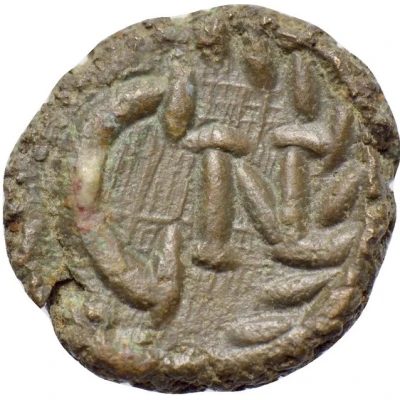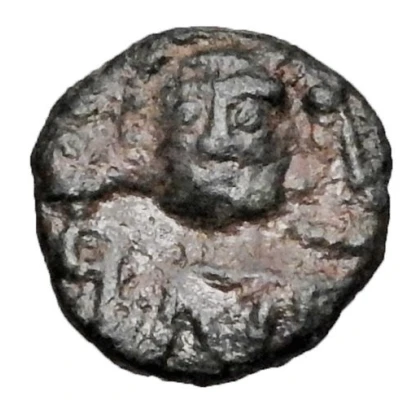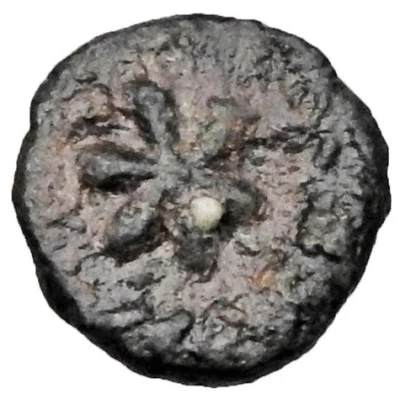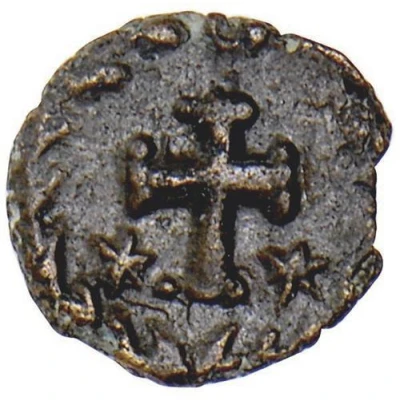


© Numismatik Naumann GmbH
Nummus - Justinian I Carthage; C N ND
| Copper | 0.6 g | 9 mm |
| Issuer | Byzantine Empire (Byzantine states) |
|---|---|
| Emperor | Justinian I (527-565) |
| Type | Standard circulation coin |
| Years | 527-565 |
| Value | 1 Nummus (1⁄7200) |
| Currency | First Solidus Nomisma (498-720) |
| Composition | Copper |
| Weight | 0.6 g |
| Diameter | 9 mm |
| Shape | Round (irregular) |
| Technique | Hammered |
| Orientation | Variable alignment ↺ |
| Demonetized | Yes |
| Updated | 2024-10-04 |
| Numista | N#300305 |
|---|---|
| Rarity index | 100% |
Reverse
Large C, with smaller N to right, all within wreath.
Script: Latin
Lettering: C N
Translation: C : "Carthage".
Comment
Obverse legend normally illegible.Interesting fact
The Nummus coin was used as a means of payment for the Byzantine Empire, which was a vast and powerful empire that lasted for over 1,000 years. The coin was made of copper and had a very small denomination, which made it accessible to the common people for everyday transactions. Despite its small value, the Nummus coin played a significant role in the economy of the empire and was used for buying essential goods and services. It's fascinating to think that a coin of such small value could have had such a significant impact on the economy and daily lives of people in the Byzantine Empire.



